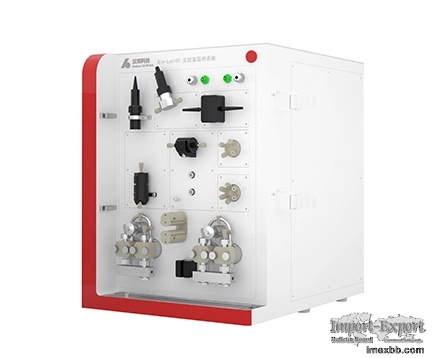 |
 |
Home > Offers to Sell > Chemicals & Plastics > Other Chemicals > Other Chemicals
| Contact: | hanbon |
|---|---|
| Company: | Jiangsu Hanbon Science&Technology Co., LTD |
| No.1-9 jixian road, economic development zone | |
| huaian 223005 | |
| China | |
| Phone: | 86-0517-83706900 |
| E-Mail: | |
| Date/Time: | 1/4/24 1:39 GMT |
Chromatography System
Hanbon advanced chromatography systems has reliable performance and flexible
configuration, and can provide Bio-Lab® laboratory chromatography system, Bio-
Pro® pilot&process chromatography system, etc.
ommon Principles Of Process Scale-Up: Linear Scale-Up
Linear scale-up is the most common principle used in process scale-up. By
linear scale-up, we mean that we can obtain almost uniform bioprocess
chromatography results from laboratory scale to pilot results or industrial
production level. The core idea is to keep the column height and linear flow
rate constant and only scale up the column diameter and volume flow rate. A
fixed column height and linear flow rate theoretically ensures the same
retention time, the number of CVs used in chromatography and the number of CVs
of the eluted sample, maximizing the same purification results. Theoretically,
this linear scale-up of the purification separation behavior should be very
similar, thus ensuring a successful scale-up of the ion chromatography process.
However, some additional factors need to be considered, including a decrease in
column tube support (increased pressure drop), column efficiency/column bed
instability, sample diffusion (peak spreading), and dead volume of the system
and tubing.
Conversion Of Linear Flow Rates (Cm/H) To Volumetric (Ml/Min) Flow Rates
When comparing results from columns of different sizes, it is convenient to
express the flow rate as a linear flow rate (cm/h). However, flow rates are
often measured as volumetric flow rates (ml/min). In order to convert between
linear and volumetric flow rates, one of the following equations can be used .
Linear flow rate (cm/h) to volumetric (ml/min) flow rate
Volumetric flow rate (ml/min) = linear flow rate (cm/h) / 60 x column cross-
sectional area (cm2)
=Y/60×π×d2/4
Y = linear flow rate (cm/h)
d = internal diameter of the column (cm)
e.g.:
There is a glass column (inner diameter 1.6 cm), when the linear flow rate is
150 cm/h, what is the volumetric flow rate?
Y=Linear flow rate = 150cm/h
d = inner diameter of the column = 1.6 cm
Volumetric flow rate = 150 x π x 1.6 x 1.6/(60 x 4)
From volumetric flow rate (ml/min) to linear flow rate (cm/h)
Linear flow rate (cm/h) = volumetric flow rate (ml/min) x 60/column cross-
sectional area (cm2)
=Z×60×4/π×d2
Z = volumetric flow rate of the column (ml/min)
d = inner diameter of the column (cm)
e.g.:
There is a glass column (inner diameter 0.5 cm), when the volumetric flow rate
is 1 ml/min, what is the linear flow rate?
Z = volumetric flow rate of the column = 1 ml/min
d = inner diameter of the column = 0.5 cm
Linear flow rate = 1 x 60 x 4/(π x 0.5 x 0.5) cm/h = 305.6 cm/h
We provide chromatography step by step method, chromatography purification
method, chromatography process example, anion exchange chromatography elution,
equipment used for chromatography, etc. For more information, please feel free
to contact us!
Minimum Order: 1 sets
SOURCE: Import-Export Bulletin Board (https://www.imexbb.com/)
Similar Products:Not exactly what you are looking for? Post an Offer to Buy!
![]()
© 1996-2010 IMEXBB.com. All rights reserved.
|
|
|






